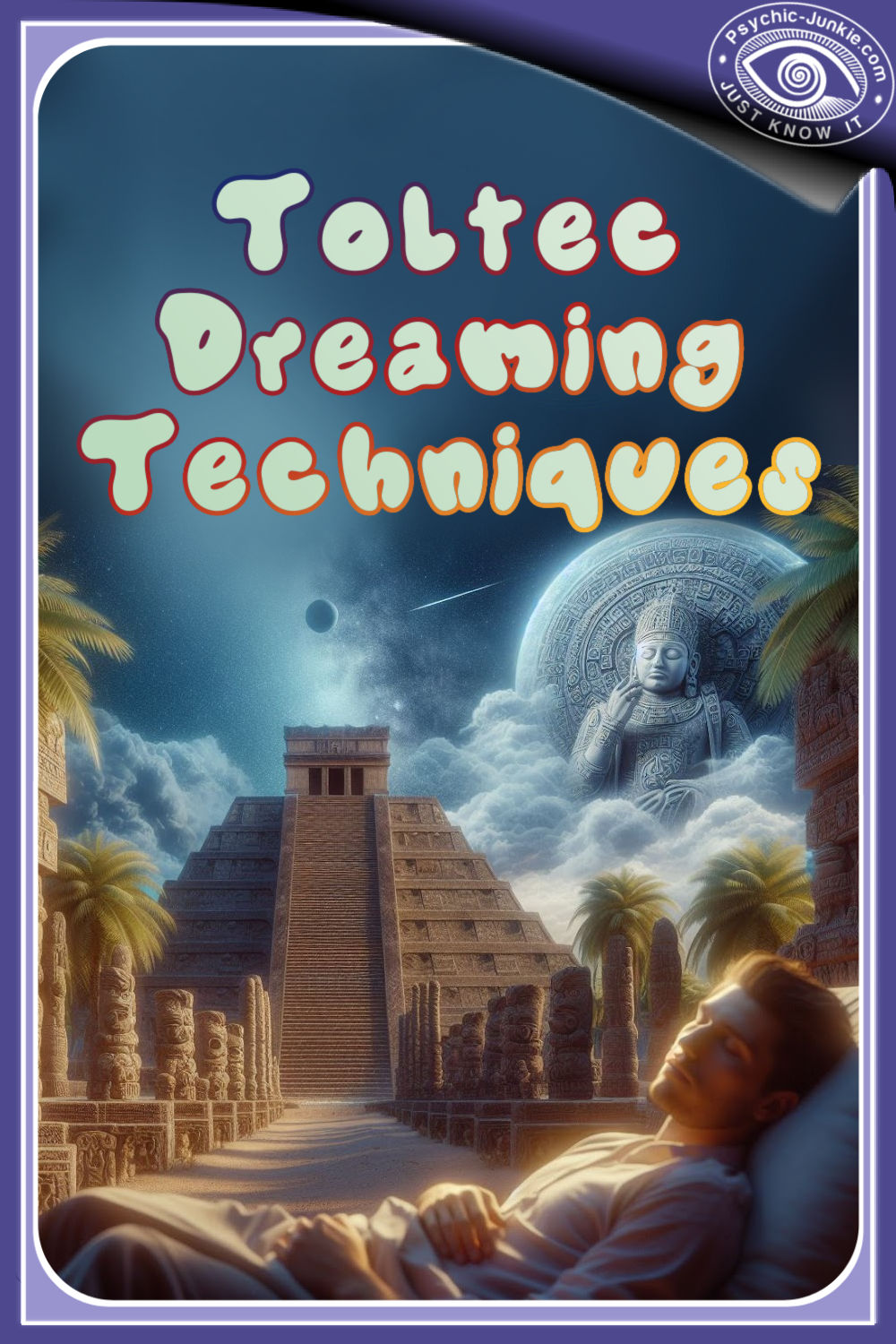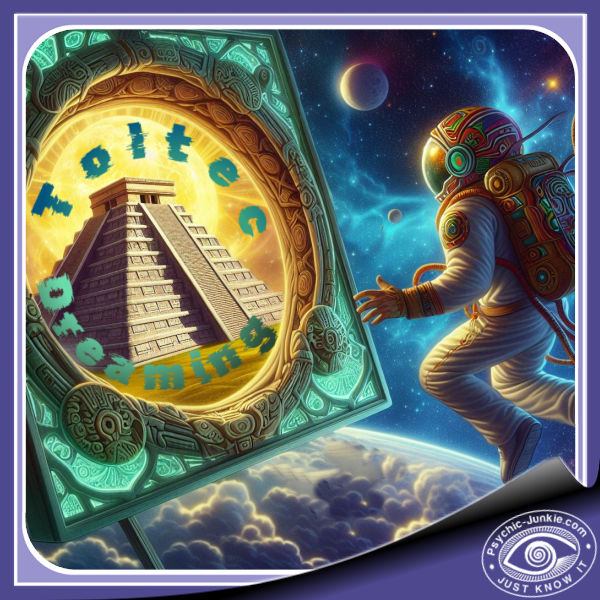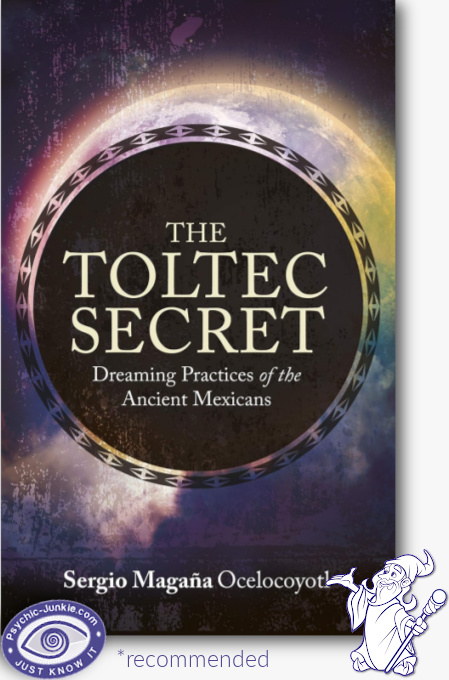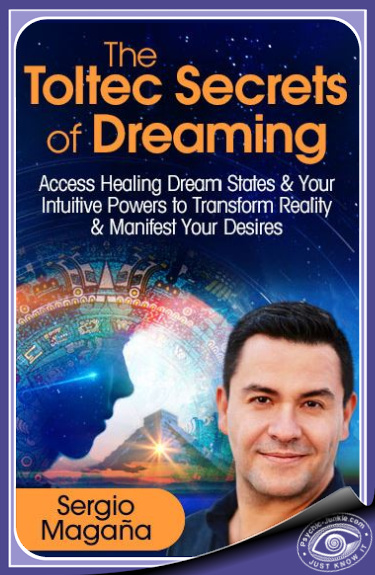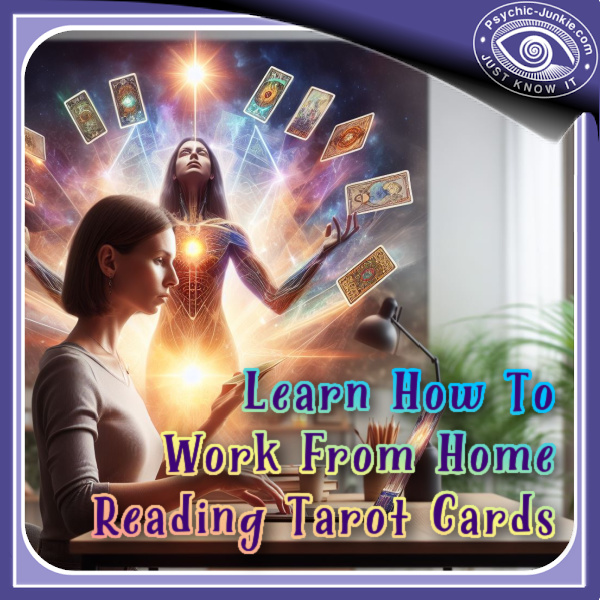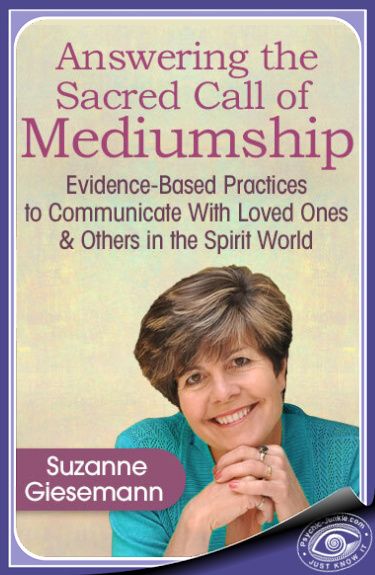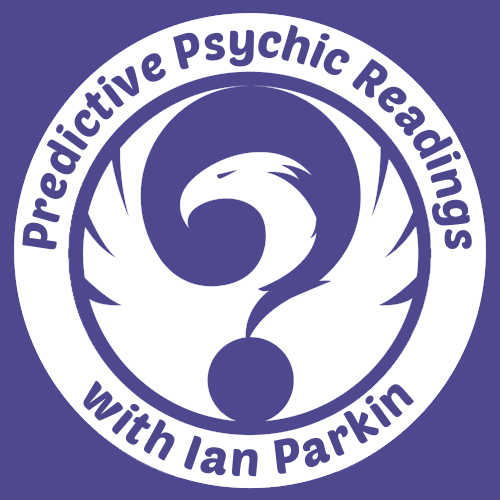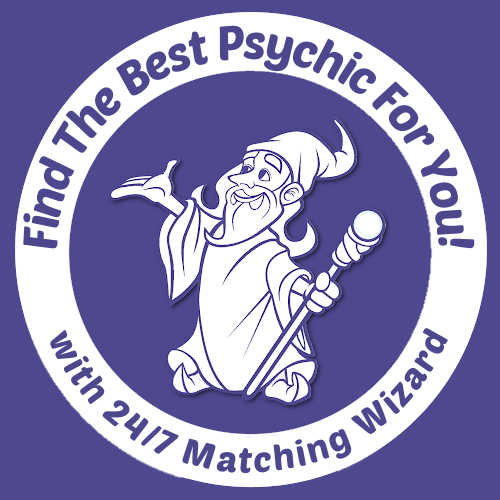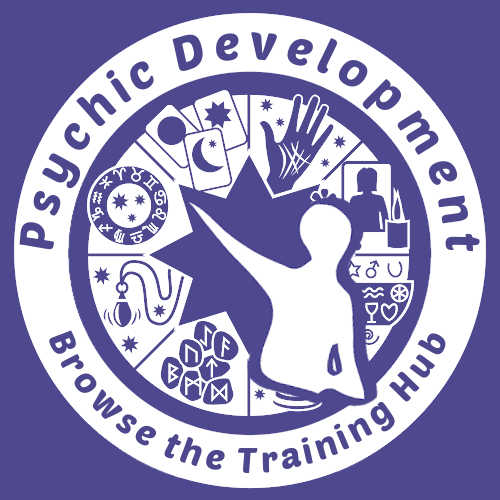- Home
- Dream Readings
- Toltec Dreaming
Ian Parkin is the author of this post.
Toltec Dreaming Techniques: The Once-Secret Ancient Wisdom Revealed
Toltec Dreaming is a fascinating practice originating in the ancient world.
We know that all humans, and many animals, dream every night, and humans have always been fascinated to learn what causes dreams and what they mean.
The development of interpreting dreams dates back at least as far as 3000-4000 B.C. We know that because the interpretations of dreams were recorded in permanent form on clay tablets. It is thought that many primitive peoples were unable to initially distinguish between the real world and the dream world. In many cases, these people looked upon the dream world as an extension of the physical world around them, and in many cases, they saw the dream world as more powerful than the waking one.
Dream interpretation was such an important field to the ancient Greek and Roman world that personal dream interpreters often accompanied generals and other military leaders into battles. Dreams were taken extremely seriously, and the Greeks and Romans often viewed dreams clearly imparted some kind of message sent by their Gods.
Dreams also had a religious context in ancient Egypt, and priests there doubled as dream interpreters. Dreams were among the items recorded by the ancient Egyptians in the form of hieroglyphics. Those whose lucid dreams were significant were thought to be blessed and were given special status in these ancient societies. Likewise, people who were able to interpret dreams were thought to receive these gifts directly from the gods, and they enjoyed a special status in society as well.
There are over 700 mentions of dreams in the bible, and people in biblical times saw dreams as very significant. Dreams and their interpretations are mentioned in many of the most significant books of the bible and other holy scriptures.
In many cases, dreams were often seen as a form of prophecy. People often interpreted their dreams as omens or warnings and adjusted their activities accordingly. Dreams were often thought of as omens from deities, as messages from spirits, or as messages from departed souls. In some cases, dreams were even seen as the work of demons, meant to confuse and trouble the dreamer.
Dreams were so important that they often dictated the actions of political and military leaders, affecting everything from the prosecution of a battle to the outcome of a political decision. Dreams were also thought to provide vital clues to healers, and they were used in the diagnosis and treatment of all manners of illness.
Dreaming was often looked upon by indigenous peoples to commune directly with Gods and Spirits, and dreams are still used in this way by cultures around the world. Many people believed, and in shamanism still, that while in the dreaming the soul leaves the body and communes with the spirit world.
The Chinese were one culture who believed that the soul left the dreaming body each night during sleep. They believed that if the dreamer were suddenly awakened the soul may not be able to return to the body. That is why some Chinese are still leery about the use of alarm clocks. This is just one example of how ancient legends can linger into the modern world.
Toltec Dreaming
Some Indigenous Mexican and Native American societies share this ancient view of the importance of dreams and share the belief in a separate dimension that is visited during dream sleep. The Toltec people believed that their departed ancestors lived in their dreams, and that they were able to take forms like animals and plants. Thus, dreams were seen as a technique for them to commune with their recent and ancient ancestors, and to gather wisdom and knowledge that would serve them in their waking lives. Dreams were also seen as ways to gather information about their purpose or mission in life.
The respect for dreams changed radically early in the 19th century, and dreams in that era were often dismissed as reactions to anxiety, outside noises or even bad food and indigestion. During this period, dreams were thought to have no meaning at all, and interest in dream interpretation all but evaporated. This all changed, however, with the arrival of Sigmund Freud later in the 19th century. Sigmund Freud stunned the world of psychiatry by stressing the importance of dreams, and he revived the once dead art of dream interpretation.
Toltec Dreaming FAQs
What is Toltec Dreaming?
What is Toltec Dreaming?
- Toltec Dreaming is a spiritual practice and philosophy that originated with the ancient Toltec civilization of Mexico. It involves using dreams and dream states to explore and expand one's consciousness, increase self-awareness, and connect with higher realms of existence.
What are the key principles of Toltec Dreaming?
What are the key principles of Toltec Dreaming?
- Some of the key principles of Toltec Dreaming include: the belief in multiple levels of reality and consciousness, the use of dreams and dream states to access these levels, the importance of intent and awareness in shaping reality, and the goal of achieving personal freedom and mastery over one's consciousness.
How is Toltec Dreaming practiced?
How is Toltec Dreaming practiced?
- Practitioners of Toltec Dreaming engage in various techniques to cultivate awareness and control over their dreaming states. This includes dream journaling, lucid dreaming practices, energy work, visualization exercises, and the use of psychoactive plants and herbs to induce altered states of consciousness.
What are the benefits of Toltec Dreaming?
What are the benefits of Toltec Dreaming?
- Toltec Dreaming can lead to increased self-knowledge, spiritual growth, healing, and the development of psychic abilities. It is also believed to help you break free from limiting belief systems and achieve a greater sense of personal power and freedom.
Where can I learn more about Toltec Dreaming?
Where can I learn more about Toltec Dreaming?
- There are a number of books and resources available on Toltec Dreaming, including works by authors like Carlos Castaneda, Florinda Donner, and Sergio Magaña. There are also workshops and retreats offered by various teachers and practitioners of this tradition.
The Toltec Secret: Dreaming Practices of the Ancient Mexicans by Sergio Magaña
Discover the powerful dreaming techniques of the ancient Toltecs in this eye-opening read from a renowned Mexican healer
In this remarkable book, Sergio Magaña explores the history and wisdom of the ancient Toltec way. Closed to outsiders until now, this rich spiritual tradition is over 5,000 years old and was a touchstone for the Aztecs.
The Chichimeca were the original holders of this secret knowledge, considered to be closed to outsiders until now, were masters who had a deep understanding of the dream state. They had a working knowledge of the power of our perceptions - how they can form our reality and even influence matter itself. The Toltec Secret guides you, step-by-step, through the Toltec rituals and symbols that will enable you to:
- Become lucid in your dreams
- Create your life through your dreams
- Send healing to others while in the dreaming state
- Communicate with your ancestors
- Develop your intuition and use Toltec techniques to see the aura
- Heal and rejuvenate your body by connecting with the energy of the sun
- Use the mysterious obsidian mirror for healing yourself and others
- Practice the powerful dances of the Toltecs and Mexihcas
- See your “teyolia,” or path of the soul, to learn who you were in past lives and release parts of yourself that are trapped in old experiences.
An in-depth study on the hidden power of dreams and expanded consciousness, this is recommended reading for fans of Don Miguel Ruiz and Carlos Castaneda who want to grow their Toltec library.
Publisher : Hay House. (November 1, 2014)
Discover Ancient Toltec Dreaming Practices For Healing Your Body, Mind, And Spirit
Did you know that your nighttime dreams can provide powerful insights for healing your body, mind, and spirit… overcoming your life challenges… and evolving into wholeness and fulfilment?
The 5,000-year-old Toltec secret of Mesoamerica, originally the undisclosed knowledge of the Mexican Chichimeca - masters of the dream state - used this method of perception to manifest desired realities, and even transform matter itself.
Their ancient knowledge, passed down to the Aztecs, is rooted in Nahualism, spiritual teachings that use the altered states of the dreamtime - while asleep and awake - to explore other energetic dimensions, connect with ancestral guides, initiate self-healing, and masterfully create the future.
Mexican mystic, healer, dream teacher, and author Sergio Magaña will share the power of Toltec Dreaming to help you release heavy energies of the past, clear the way for more transformative dream states, use ancient dreaming to manifest your desires - and even change the trajectory of your life.
Register for Toltec Dreaming & the Prophecies of the Suns: Ancient Dreaming Practices to Release the Past, Heighten Intuition, Heal & Manifest.
In this powerful hour, you’ll:
- Discover Nahualism, the visioning wisdom that ancient Mexicans used; the “blossom dream” or lucid dream, for dreaming at will - and for manifestation while asleep or awake
- Learn how the night is split into different dreaming cycles to assess your optimal times for your creative lucid dreaming potential
- Discover the wisdom in the Prophecies of the Suns to help you better understand these transformational times and the ways ordinary dreaming can help you navigate them
- Discover Toltec Yoga for Dreaming and learn the foundational postures of animals and Gods, as well as a breathing exercise to release heavy energies from the past, free up your energy, and live more fully
- Experience a Dream Planting practice to set an intention, transmute the energy body of a current challenge, and manifest a more desirable outcome
Sergio will also share about the prophecies of the suns - teachings from the Toltec and Aztec calendars that perceive the movement of the Sun over thousands of years as holding profound wisdom about the transformation of the Earth and humanity.
You’ll discover how these ancient teachings of Mexico predicted our present global challenges, and that the Sun’s current movement - from the Fifth to the Sixth Sun - signifies a shift in human consciousness, including our understanding of how we relate to ourselves, each other, the Earth, and the cosmos.
You’ll also learn how Toltec Dreaming can help you navigate these challenging times and manifest a better future using the new energy and opportunities the Sixth Sun brings.
- P.S. In Toltec Dreaming & the Prophecies of the Suns: Ancient Dreaming Practices to Release the Past, Heighten Intuition, Heal & Manifest, you’ll discover the once-secret dream wisdom of the Chichimeca - and experience a powerful dream practice to transmute the energies of a current challenge and manifest a more desirable outcome.
Test Your Psychic Ability
The Lifeleap Institute’s Psychic Project is a unique online psychic development tool using real people and events as "psychic targets."
They start by asking you to focus on the "psychic targets" and answer a series of special questions about these targets.
They then reveal to you the actual psychic targets. You get to compare your results with the actual psychic targets. You also get to see the results of other participants.
Even if you think you have no psychic ability, this tool will offer proof that you do.
It's easy to participate and the Psychic Project is free!
Click Here To Test Your Psychic Ability
Develop Your Intuition And Become An Online Tarot Card Reader
You can learn how to become a professional online tarot card reader in 90 days or less with Tatiana Jones' bestselling course.
In this short course, Titania teaches everything you need to know to start an online tarot reading business - with zero experience required!
You do not need to be psychic to read tarot cards online! It is all about being intuitive and “connecting the dots”.
Tarot Reading Entrepreneurship
- Help People Find Meaning
- Work Remotely
- Set Your Own Hours
- Replace Your Full Time Income
- Work Just A Few Hours Per Day
Learn To Be A Psychic Medium
An Evidence-Based Path to Communicate With Loved Ones & Others in the Spirit World.
In this FREE hour with Suzanne Giesemann, you will: Gain an understanding of “evidential” mediumship and why it’s so sacred. Discover the 3 keys to mediumship: Belief in the Spirit World, alignment, and a shift in focus from the physical to the Spirit World. Learn how you can begin communicating with your loved ones who have passed. Find mediumship can be a path for your soul’s evolution. Hear about what makes a reading “evidence-based” - and how this form of mediumship raises the bar and meets the true goal of being an authentic and indisputable voice for Spirit. Experience a practice to connect with your guides and ask them for signs. Click here to learn more about this free event > >
- Home
- Dream Readings
- Toltec Dreaming
